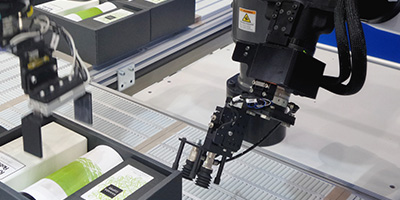Big data is now a business essential but it’s analytics that delivers the insights that have the potential to reduce cost across the data value chain, powered by automation, autonomy, comprehensiveness and faster innovation cycles. Traditional analytics is slow-moving, demands specialist data science skills and leaves many potential benefits undiscovered in the slew of organisational data. The augmented analytics approach enables personnel who are not data scientists to analyse data via simplified searching that can use natural language or even voice.
This democratisation of analytics is opening up organisations’ data to a wider range of people than ever before, enabling them to mine data and find valuable insights and points of action within it. To accelerate and empower organisations with tools to achieve augmented analytics, Subex has launched HyperSense, its platform which, based on the company’s extensive data analytics experience, enables non-specialist users to easily aggregate data from disparate sources and turn it into insights by building, interpreting and tuning AI models and then share their findings across the organisation.
What are the key challenges that communications service providers (CSPs) face today in artificial intelligence (AI) adoption in data analytics?
Vinod Kumar: Business leaders, particularly CXOs are well-aware that the application of artificial intelligence and machine learning in decision analytics promises value. We are already seeing real outcomes from hyperscalers that report tangible value. In the telecoms industry, AI is touted as a game-changer across the data value chain and many CSPs have embarked on programmes to enable AI and machine learning (ML) in finance, human resources, marketing and other functions.

However, these projects are often disconnected, implemented in a piecemeal way, driven by a specific function or a department. What’s missing is an overarching strategy that enables consistent adoption of AI and ML for decision analytics, which is something that nimble, digital-native hyperscalers are well-seasoned at. […]
Why has Subex developed and launched the HyperSense platform? How does it help address the gap between the promise of AI and the realities on the ground that CSPs face?
When we set out to build HyperSense, we were inspired by the opportunities that existed thanks to intense digital transformation and the potential of 5G. We saw it as a great opportunity for the telecoms industry to re-examine their entire data analytics stack and identify how this can unlock unprecedented value. That was the vision behind HyperSense.

One thing we see is that the real users of platforms have the business understanding of data and the cultural understanding of the use cases, but lack the expertise of data scientists. The idea was to build a platform that makes users autonomous. While data scientists can build phenomenal models and algorithms, solving business problems requires business understanding – and this is the gap that HyperSense bridges by being a completely no-code platform. In giving users end-to-end control, it empowers them to innovate and experiment rapidly. […]






